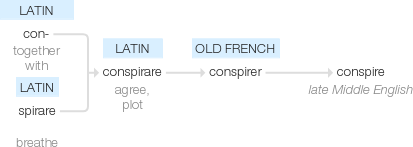How we cut the Elephant
We cut Ecosystem Development into the 8 focus areas we detail below. The level of detail we chose is not too deep so you can understand what we mean for each cut without being overwhelmed. You could divide the 8 elements between the Conspiration (co-marketing, co-selling, co-serving, co-innovating) we ultimately seek, and the rest: what facilitates the Conspiration.
Ecosystem Vision & Strategy
Here are some of the elements of the Ecosystem Vision & Strategy: Partner Identification, Partners' Servicing of Customers JtbD, Partners' own JtbD, Partners' own Partners, the Perfect Stack (ours & partners'), Partner Strategy, Partner Business Case, Partnership Value Proposition to Customers, Partner Scorecard, Broader Ecoystem Vision, Partner GTM & Direct GTM, Partnership Business Financial Plan & other KPIs, Partnership Principles, Why Partner (for internal teams), Partnership & Organizational OKRs, Partner Ecosystem Monitoring, Partner Facing Summary.
Organization & Ecosystem are in constant dialogue. Even if we do not start by revisiting the Organizational Vision & Strategy, the Ecosystem Vision & Strategy will have us modify it anyway, and it will keep improving throughout our work as we understand better each of the partners in the ecosystem and ourselves in these relationships.
Ecosystem
Leadership & Culture
Who leads the Ecosystem efforts? Who manages the partner relationships? What are the reporting lines? What are the partner roles? How do one transitions to these roles? How do the Indirect & Direct businesses interface? Is a "direct business" still a thing? How does the Rhythm of Business take into account the Ecosystem? ...
Partnership Programs
Partner Journeys Facilitation
How engaged are people within your organization? What's the level of trust? The global base rate for both engagement and trust are low. Even if both your organization and your partner's were outliers showing high level of engagement and trust, it does not guarantee this particular partnership will benefit from high level.
So, how do we engage Partners and more specifically the different stakeholders at the Partners? It includes To-Partner Marketing, Partner Recruitment, Partner Discovery, Committing incl. Contracting, Perf/Health Plan, Partner Kick-Off & Onboarding, Stakeholder Recruitment & Engagement, Rolling Thunder Campaigns, Partner Comms & Collaboration, Partner Advisory Board, Partner Community, Partner Events, Rewards, Concierge Services, Signals to monitor/trigger, Evaluation, Flow.
Joint Business Planning
Partner Enablement

Please refer to the How section for more details.
The graph maps PeakPerform's 7 interventions in 2 dimensions: time to deliver and type of knowledge.
Conspiring

Augment & Automate
Prioritization of Jobs-to-be-Done & Requirements, Assess Current Systems, Discover Solutions & Vendors, Map Vendor Choice & Internal Complements to do the JtbD, Implementation, Usage & Outcome Monitoring...

We look forward to
working with you.


